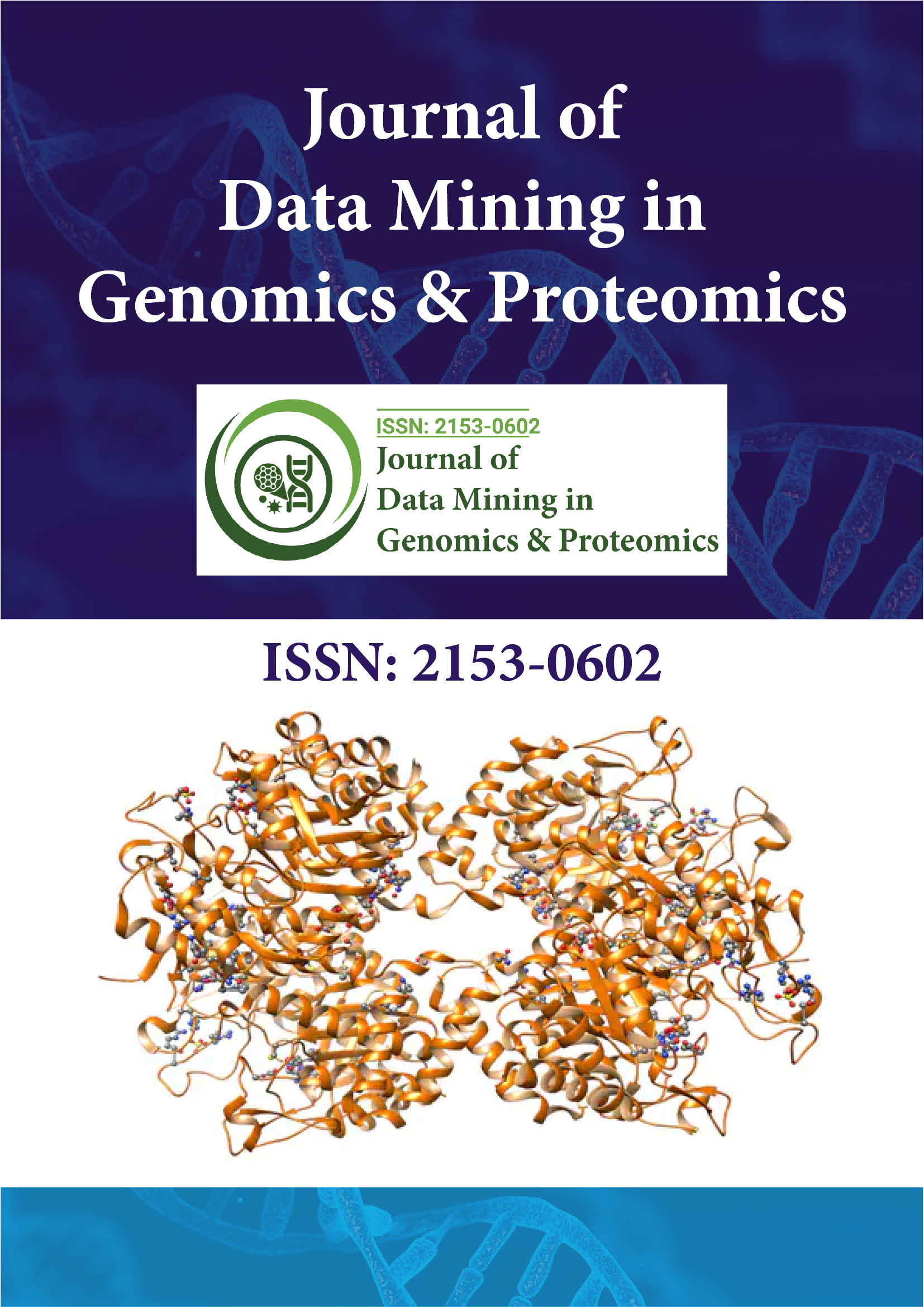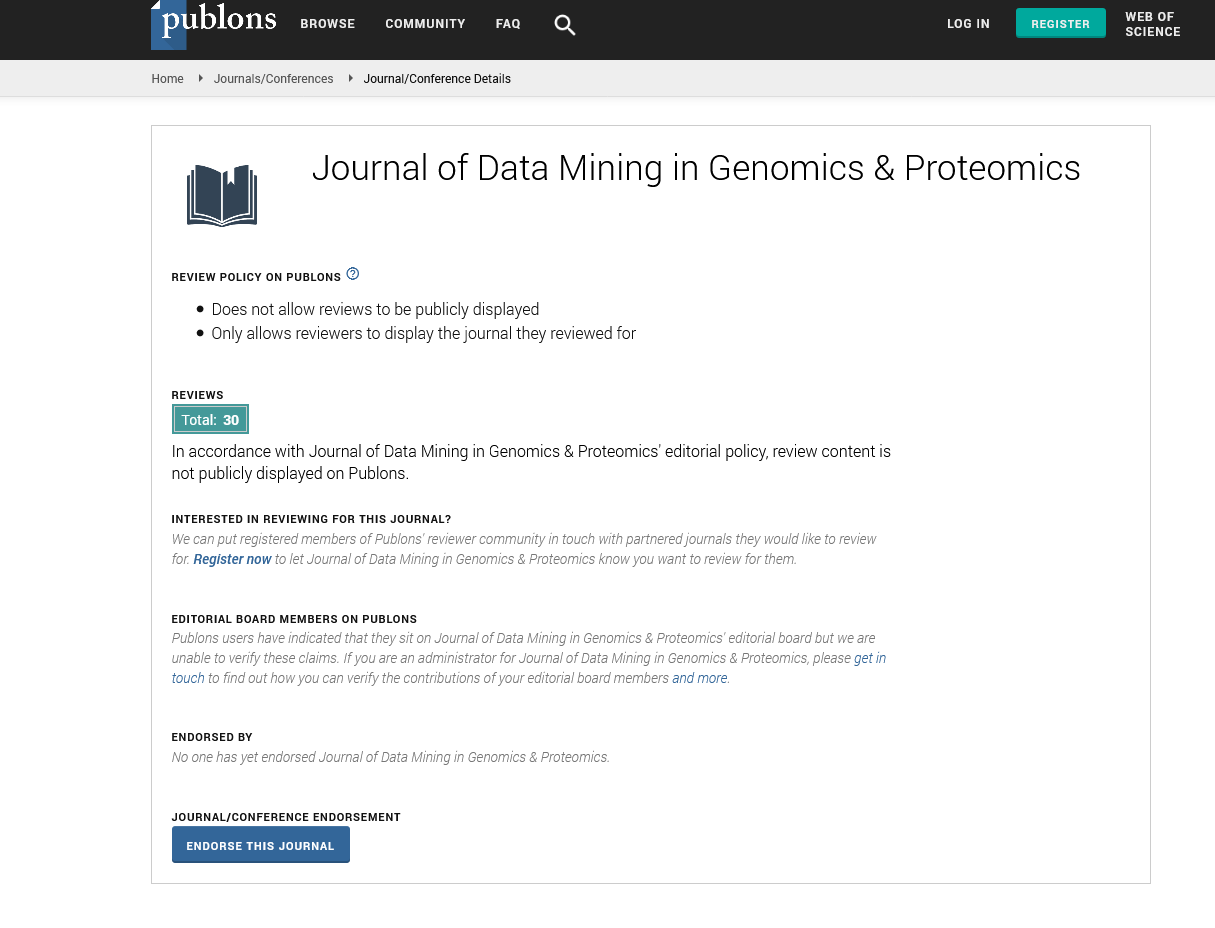Indexed In
- Academic Journals Database
- Open J Gate
- Genamics JournalSeek
- JournalTOCs
- ResearchBible
- Ulrich's Periodicals Directory
- Electronic Journals Library
- RefSeek
- Hamdard University
- EBSCO A-Z
- OCLC- WorldCat
- Scholarsteer
- SWB online catalog
- Virtual Library of Biology (vifabio)
- Publons
- MIAR
- Geneva Foundation for Medical Education and Research
- Euro Pub
- Google Scholar
Useful Links
Share This Page
Journal Flyer

Open Access Journals
- Agri and Aquaculture
- Biochemistry
- Bioinformatics & Systems Biology
- Business & Management
- Chemistry
- Clinical Sciences
- Engineering
- Food & Nutrition
- General Science
- Genetics & Molecular Biology
- Immunology & Microbiology
- Medical Sciences
- Neuroscience & Psychology
- Nursing & Health Care
- Pharmaceutical Sciences
Commentary - (2025) Volume 16, Issue 2
Epigenomic Data Mining for Understanding Developmental Disorders
Emily Robinson*Received: 29-May-2025, Manuscript No. JDMGP-25-29761; Editor assigned: 31-May-2025, Pre QC No. JDMGP-25-29761; Reviewed: 14-Jun-2025, QC No. JDMGP-25-29761; Revised: 20-Jun-2025, Manuscript No. JDMGP-25-29761; Published: 28-Jun-2025, DOI: 10.35248/2153-0602.25.16.380
Description
Developmental disorders frequently stem from disruptions in gene regulation, rather than alterations in the DNA sequence itself. Epigenomic profiling has emerged as a powerful approach to understanding how gene expression is regulated across various stages of development and in different cell types. This involves studying regulatory elements such as DNA methylation, histone modifications and chromatin accessibility, which collectively shape cell identity and govern developmental processes. By mapping these epigenetic markers, scientists can pinpoint regulatory mechanisms that become dysregulated in developmental conditions. As large-scale epigenomic datasets continue to grow, computational mining techniques are being increasingly used to uncover meaningful patterns that may inform diagnosis, classification and treatment strategies. Advanced technologies such as Chromatin Immunoprecipitation sequencing (ChIP-seq) and Assay for Transposase-Accessible Chromatin using sequencing (ATAC-seq) generate vast amounts of data on chromatin organization and gene regulatory elements. However, these datasets are often sparse, noisy and variable, making them challenging to analyze. To address this, researchers employ statistical models and pattern recognition algorithms to extract disease-relevant epigenetic features. Genome-wide methylation studies have revealed distinct epigenetic signatures associated with several neurodevelopmental disorders, including Rett syndrome and fragile X syndrome. These consistent patterns across affected individuals underline the diagnostic potential of epigenomic profiling and data-driven approaches.
In recent years, machine learning has further advanced the field of epigenomic analysis. Unsupervised learning techniques, such as clustering algorithms, help group patients based on shared epigenetic traits, potentially revealing novel subtypes of developmental disorders that are not apparent from genetic data alone. Meanwhile, supervised learning methods have shown promise in predicting developmental outcomes and disease progression using individual epigenomic profiles. These predictive models are becoming increasingly important in guiding clinical decision-making and tailoring interventions. Moreover, deep learning techniques such as convolutional neural networks are being explored to capture complex, non-linear interactions among various epigenetic marks. These methods enhance the ability to detect subtle but biologically relevant differences between healthy and diseased states. When combined with clinical metadata and multi-omics datasets, these computational tools can yield highly accurate and interpretable diagnostic models.
A major strength of modern epigenomic research lies in integrative analysis, where epigenomic data is combined with transcriptomic (gene expression) and proteomic (protein-level) information. This layered approach allows researchers to trace how specific epigenetic changes impact gene transcription and protein production, ultimately influencing cellular behavior and developmental outcomes. Such integrative frameworks offer a holistic view of how dysregulation at the molecular level contributes to complex developmental phenotypes. One particularly impactful application of epigenomic mining is in biomarker discovery. Certain methylation markers, especially those detectable in accessible tissues like peripheral blood, offer a non-invasive means of diagnosing developmental disorders early in life. These biomarkers can be instrumental in initiating timely interventions and supportive care. Furthermore, since some epigenetic modifications such as DNA methylation and histone acetylation are reversible, they present attractive targets for epigenetic therapies that may correct or mitigate disease symptoms.
Despite these advancements, the field faces significant challenges. One major hurdle is the tissue specificity of epigenetic marks. Since many developmental disorders primarily affect the brain, accessing relevant tissue samples is often not feasible in clinical settings. As a result, researchers often rely on surrogate tissues like blood or skin, which may not fully reflect the epigenetic landscape of neural tissue. This introduces complexity in data interpretation and may limit the generalizability of findings. From a computational standpoint, issues such as batch effects, data heterogeneity and reproducibility across different datasets must be carefully managed to ensure robust conclusions. Researchers continue to refine algorithms and normalization techniques to improve data quality and analytical accuracy.
Global collaborative initiatives are underway to create reference epigenomes across different tissues, cell types and developmental time points. These standardized maps serve as essential baselines for identifying disease-specific deviations. Advances in single-cell epigenomics now allow scientists to explore regulatory changes at a much finer resolution, uncovering cell-type-specific disruptions that were previously obscured in bulk tissue analyses. Additionally, federated learning and privacy-preserving AI techniques are enabling institutions to collaboratively analyze sensitive patient data without compromising privacy, accelerating discovery across geographically distributed datasets. In conclusion, mining epigenomic datasets offers powerful insights into the regulatory disruptions underlying developmental disorders. By integrating computational techniques with biological data, researchers can identify novel diagnostic markers, uncover disease mechanisms and explore potential therapeutic avenues. As datasets expand and analytical tools evolve, epigenomics is set to play an increasingly central role in advancing personalized medicine for developmental conditions.
Citation: Robinson E (2025). Epigenomic Data Mining for Understanding Developmental Disorders. Journal of Data Mining in Genomics & Proteomics. 16:380.
Copyright: © 2025 Robinson E. This is an open-access article distributed under the terms of the Creative Commons Attribution License, which permits unrestricted use, distribution and reproduction in any medium, provided the original author and source are credited.

